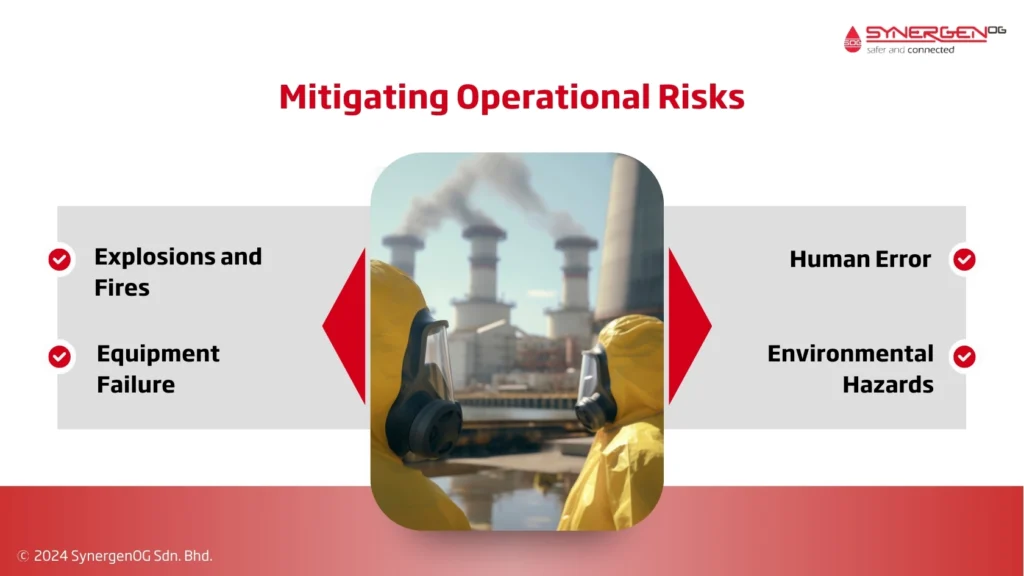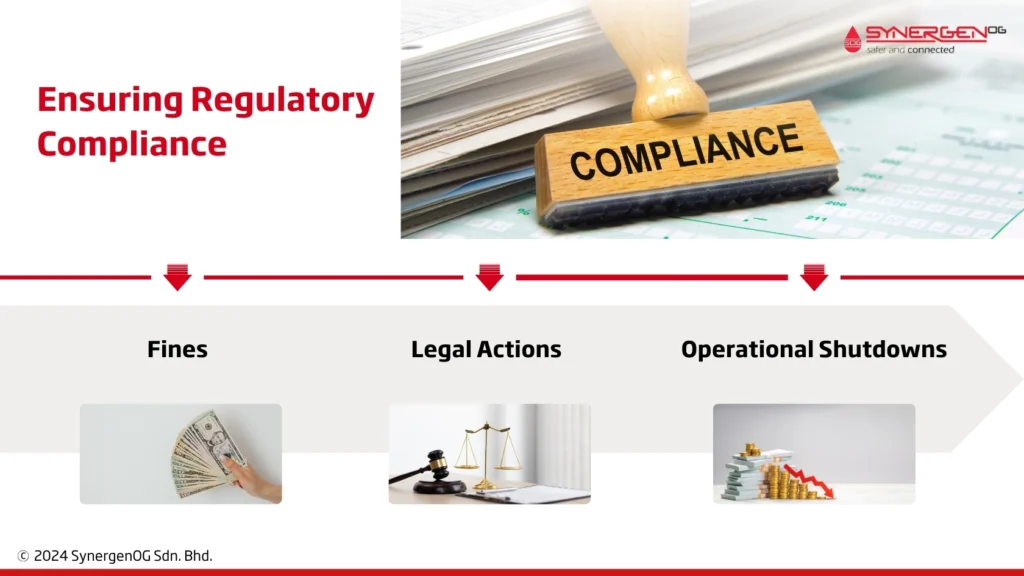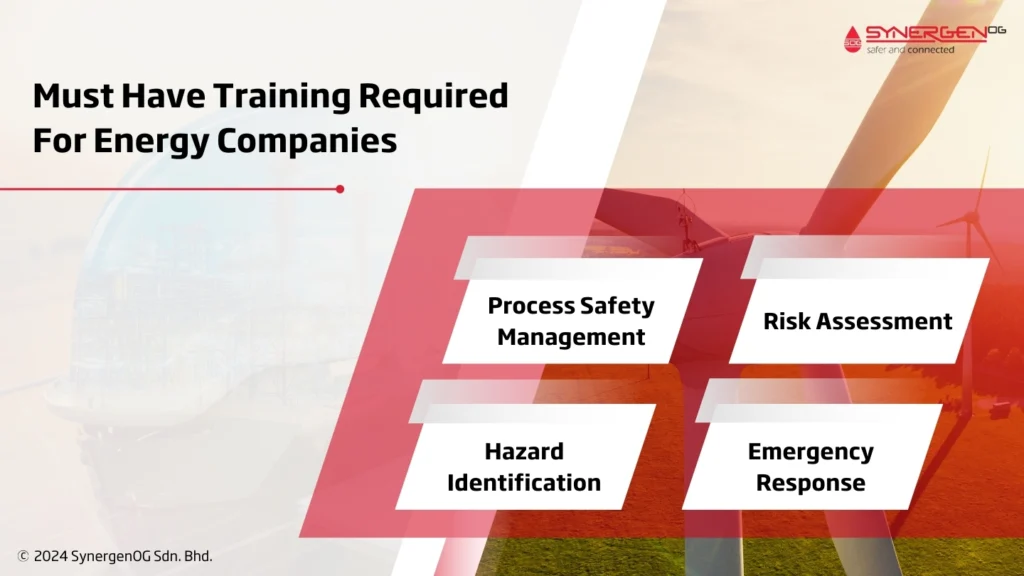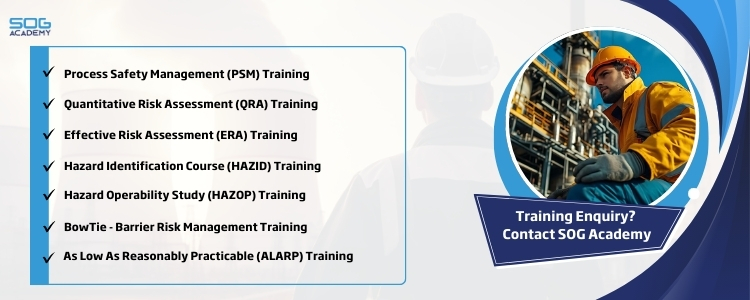| Summary: To highlight the importance of safety and risk training for energy companies, addressing why such investments are critical in mitigating operational risks, improving regulatory compliance, and enhancing worker safety. By equipping employees with the necessary knowledge and skills, companies can reduce the likelihood of accidents, improve response to emergencies, and minimize costly downtime. |
Significance of Safety in the Energy Industry
The energy industry plays a significant role in driving the global economy, with sectors such as oil, gas, and renewables providing the energy that fuels modern society. However, the high-risk nature of this industry must be considered.
From oil and gas drilling operations to large-scale renewable energy installations, the complexity of energy production raises the risk of accidents, equipment failure, and environmental hazards.
These risks endanger the workforce and cause significant operational, financial, and environmental challenges. Hence, safety and risk assessment are important for ensuring smooth operations and minimising potential catastrophic events.
Energy companies must adopt comprehensive Process Safety Management (PSM) and Risk Assessment Training as industry standards to address these challenges. PSM is a framework designed to manage hazardous chemicals and processes, while risk assessment focuses on identifying, analysing, and mitigating operational risks. Together, these approaches form the backbone of a proactive safety culture, ensuring that companies can operate efficiently while safeguarding their workforce, assets, and the environment.
Why Energy Companies Must Invest in Safety and Risk Training
#1. Mitigating Operational Risks

The energy sector is inherently hazardous, and companies face a variety of risks in day-to-day operations. These include:
- Explosions and Fires: In the oil and gas sector, handling volatile chemicals and flammable substances makes explosions and fires one of the most prominent hazards.
- Equipment Failure: With large, complex machinery involved in energy production, equipment failure can lead to downtime, significant financial loss, and potential accidents.
- Human Error: The energy industry relies heavily on human decision-making, especially in high-pressure situations. Inadequate training can result in errors with catastrophic consequences.
- Environmental Hazards: Spills, leaks, and emissions pose risks to the environment and to a company’s reputation and finances.
Investing in workplace safety training for oil and gas and other energy sectors can help mitigate these risks.
Comprehensive safety programs equip workers with the knowledge and tools to identify and address potential hazards before they escalate. For instance, emergency response training enables employees to act swiftly and effectively during crises, reducing the likelihood of injury or loss of life.
Practical safety training also emphasises hazard identification in energy companies, allowing employees to recognise unsafe conditions and take corrective measures proactively. This practice can help to mitigate risks in complex environments, such as offshore oil platforms or renewable energy installations, where the consequences of poor risk management can be severe.
#2. Ensuring Regulatory Compliance

The energy industry is subject to stringent regulations to ensure safety, protect the environment, and promote sustainability. Agencies such as the Occupational Safety and Health Administration (OSHA), the Environmental Protection Agency (EPA), and international bodies overseeing ISO standards are critical in enforcing safety compliance across the industry.
Energy industry regulatory compliance is mandatory, and failure to comply can result in severe consequences, such as:
- Fines: Regulatory violations can lead to hefty financial penalties, which can strain the company’s resources.
- Legal Actions: Accidents resulting from non-compliance may trigger lawsuits, resulting in further financial loss and reputational damage.
- Operational Shutdowns: Regulators may impose operational shutdowns if safety standards are not met, resulting in lost production time and revenue.
By investing in safety management in oil and gas and other sectors, companies ensure that they remain compliant with these stringent regulations. Employees are trained to adhere to safety protocols and regulatory requirements, reducing the risk of accidents and the legal and financial repercussions accompanying non-compliance.
#3. Protecting the Workforce and Reducing Accidents

One of the most compelling reasons for energy companies to invest in safety and risk training is to protect their employees. Accidents in the energy sector can be fatal, with the potential for significant injuries, loss of life, and long-term health consequences for workers. Companies must prioritise employee safety training for energy workers to support a safer working environment.
Several studies have demonstrated the effectiveness of safety training in reducing accident rates. For example, a well-trained workforce is better equipped to handle hazardous chemicals, operate complex machinery, and respond to emergencies. In sectors like oil and gas, where safety management is paramount, proper training has been shown to drastically reduce the incidence of workplace accidents.
By providing risk mitigation for energy companies, practical safety training programs ensure that employees are knowledgeable about potential risks and are prepared to respond appropriately. This not only helps to protect workers but also minimises operational downtime and financial losses associated with accidents.
#4. Cost-Effective in the Long Term

While the cost of safety training for energy companies may seem high initially, it is a worthwhile investment that provides long-term financial benefits. Accidents can be incredibly costly, involving medical expenses, legal fees, equipment repairs, and lost productivity. Preventing these incidents through safety and risk training can save companies significant money in the long run.
Moreover, companies that invest in safety training often experience lower insurance premiums due to their reduced risk profile. A strong safety record enhances a company’s reputation, attracting more favourable partnerships with clients and investors. Thus, investing in safety training is not just about preventing accidents—it also contributes to the company’s overall financial health.
Types of Training Energy Companies Should Invest In

#1. Process Safety Management (PSM) Training
Process Safety Management is a critical framework designed to prevent the release of hazardous chemicals that could lead to accidents. PSM focuses on the safe handling of chemicals and the safe operation of complex processes, making it an essential element of risk management in the energy sector. Companies dealing with hazardous substances, such as refineries and chemical plants, benefit significantly from process safety in the energy industry by implementing PSM.
Investing in PSM training ensures that employees understand how to manage chemical processes safely, follow established safety protocols, and prevent accidents related to hazardous substances.
#2. Risk Assessment Training
Risk assessment courses are essential for identifying and mitigating risks in day-to-day operations. These courses train employees to recognise potential hazards, assess their severity, and develop strategies to minimise or eliminate them. Risk assessment training is crucial in high-risk environments, such as offshore oil platforms, where the potential for accidents is significant.
By investing in risk assessment training, companies can proactively address risks before they lead to accidents, thereby protecting workers and assets.
#3. Hazard Identification Training
Hazard identification is a significant aspect of safety training. It enables employees to recognise potential dangers in their work environment before they result in accidents. Hazard identification training helps workers spot unsafe conditions or behaviours and implement appropriate safety controls. In the energy industry, where risks are not immediately apparent, such training is critical for maintaining a safe work environment.
By investing in hazard identification, companies can reduce the likelihood of accidents and ensure that workers are prepared to handle any hazards that may arise.
#4. Emergency Response Training
Emergencies, such as fires, explosions, or equipment failures, can happen anytime in the energy sector. Preparing workers for these situations through emergency response training is essential for minimising the impact of such incidents. This type of training equips employees with the knowledge and skills to respond quickly and effectively during an emergency, ensuring that they can contain hazards, evacuate dangerous areas, and assist in recovery efforts.
Practical emergency response training can save lives and significantly reduce accidents’ financial and operational impact.
The Role of a Safety and Risk Training Academies
Specialized safety and risk training academies offer tailored training programs that meet the specific needs of energy sector organisations and professionals. These academies provide expert instruction on safety management in oil and gas, renewables, and other energy industries. Training academies can also customize programs based on the company’s operations, ensuring that upstream, midstream and downstream activities are covered.
Energy companies can collaborate with these academies to access industry-standard training and the latest best practices in safety management. Whether through online courses, in-person workshops, or risk assessment courses, training academies ensure that workers receive the highest-quality instruction.
Examples of Safety Failures in the Energy Industry
Accidents in the industry underscore the importance of Process Safety Management (PSM) and risk assessment training. One prominent example is the Deepwater Horizon oil spill in 2010. A lack of proper safety measures and inadequate risk assessment played significant roles in this disaster, which resulted in the loss of 11 lives and billions of dollars in damages. Proper training in emergency response and risk assessment could have potentially mitigated the impact of this incident.
Another example is the 2005 Texas City Refinery explosion, which resulted in 15 fatalities. The investigation found that the lack of a proper Process Safety Management system and insufficient employee training contributed to the disaster. These examples highlight how safety failures can have tragic consequences and demonstrate the need for robust safety and risk management training.
The Future of Safety and Risk Management in the Energy Sector
Technological innovations are increasingly shaping the future of safety and risk management in the energy sector. Innovative proces safety software solutions, digital safety training platforms, virtual reality (VR) simulations, and AI-driven risk assessments are valuable tools for effectively training employees. These technologies provide realistic training environments where workers can practice emergency responses or conduct hazard identification without the risk of real-world harm.
Additionally, as the energy industry shifts toward sustainability, there is a growing focus on environmental safety. Process safety in the energy industry must adapt to include new technologies like wind turbines, solar panels, and energy storage systems, each introducing its own set of safety challenges.
Conclusion
In conclusion, safety and risk training are essential investments for energy companies. By prioritising Process Safety Management (PSM), risk assessment training, and hazard identification, companies can reduce operational risks, protect their workforce, ensure regulatory compliance, and improve long-term profitability.
Energy companies can incur far greater costs than the initial investment required to invest in safety training. Therefore, they must prioritize comprehensive safety and risk training programs to protect their employees, operations, and the environment.


